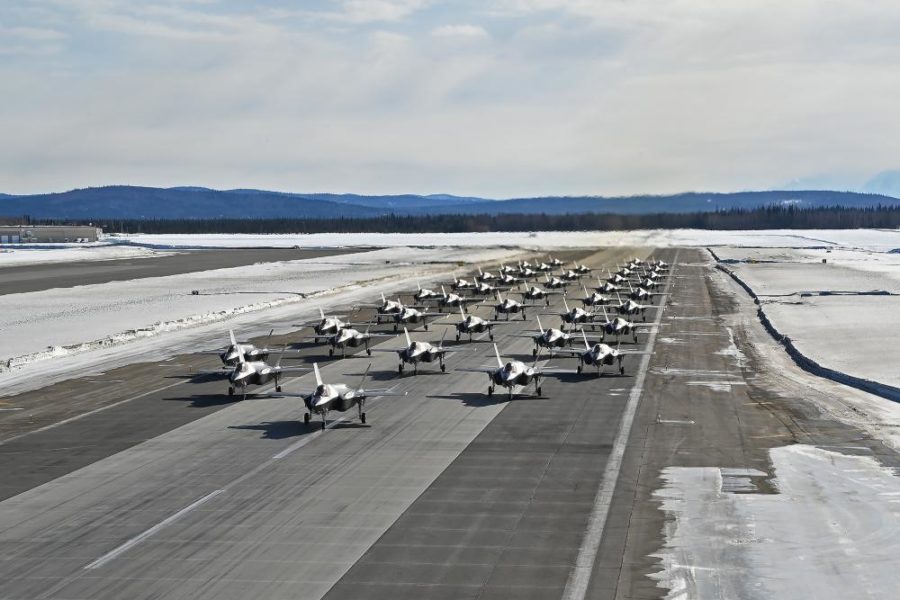The Air Force and Army need to do a better job of preparing installations in the Arctic for the impacts of climate change, according to a new report by the Defense Department inspector general.
The IG report issued April 13 looked at six bases in the Arctic and sub-Arctic regions and found that at all six, officials “did not conduct installation resilience assessments and planning required by DOD directive and public law.”
The six bases studied were:
- Joint Base Elmendorf-Richardson, Alaska
- Clear Space Force Station, Alaska
- Eielson Air Force Base, Alaska
- Thule Air Base, Greenland
- Fort Greely, Alaska
- Fort Wainwright, Alaska
The report states that at many of these installations, leaders were either unaware of those requirements or didn’t have the guidance and resources necessary to meet them.
Instead, leaders’ “day-to-day focus was on reacting to immediate problems or reducing risk to existing hazards, rather than planning for future hazards,” the report states.
Some details about those existing problems were redacted as part of the unclassified report. But the report does list “cracked runways, sunken foundations, and multiple power outages” as effects from the changing climate that have affected the bases.
In particular, the thawing of permafrost, as well as the refreezing that can subsequently occur, have created issues for paved areas, most critically on runways.
“Leaders described and we observed extensive damage to the Thule AB runway shoulders and aircraft hangars from permafrost melt and the freezing and thawing of water that is collecting under the airfield infrastructure,” the report states. At Eielson, a member of a maintenance squadron assigned to the F-35 “described the challenges from the soil freezing and thawing beneath the infrastructure on the base.”
Images included in the report also show damage to facilities at Thule and Eielson caused by water freezing and melting.

Not just changing temperatures are having an effect. The report also details the impact of increasingly severe weather by noting the damage a storm wreaked on a hangar at Eareckson Air Station, located on one of the westernmost islands in the Aleutian chain.
“In addition to the damage to Hangar 7, the pier sustained significant damage from a storm in February 2020, leaving it in critical condition and in need of repair. The pier is critical for the success of the air station’s mission because any disruption in the supply of fuel to the installation would result in catastrophic mission failure,” the report states.

Concerns about how DOD installations are equipped to handle the impacts of climate change have grown over the last several years, particularly as the Air Force has dealt with catastrophic damages to Tyndall Air Force Base, Fla., from a hurricane and Offutt Air Force Base, Neb., from flooding.
In the 2020 National Defense Authorization Act, Congress required major military installations to plan for climate change when drafting their master plans. In response, the Air Force issued a 40-page “Severe Weather and Climate Hazard Screening and Risk Assessment Playbook” to installations. By July 2021, more than 80 installations had completed an initial risk assessment, with plans to finish the changes to master plans at every base within five years, said Jennifer L. Miller then-acting assistant secretary of the Air Force for installations, environment, and energy.
In October 2021, the DOD issued a Climate Adaptation Plan for the department to incorporate climate resiliency into its decision-making.
At the same time, the importance of the Arctic has become increasingly emphasized, especially as melting ice caps have increased shipping lanes and access to the region. In 2019, the DOD released its Arctic strategy, and the Air Force followed with one of its own in 2020. USAF Gen. Glen D. VanHerck, head of U.S. Northern Command, has repeatedly pushed for more funding for the region as well.
Despite all this, “most installation leaders at the six installations we visited in the Arctic and sub-Arctic region were unfamiliar with military installation resilience planning requirements, processes, and tools, and installation leaders did not comply with requirements to identify current and projected climate-related environmental risks, vulnerabilities, and risk reduction measures, or incorporate these considerations into plans and operations,” the IG’s office found.
To address that issue, the report recommends that the Air Force’s installations czar “establish priorities, develop milestones, and identify planning and training resources for the Department of the Air Force” and “establish Department of the Air Force installation orders requiring installation commanders to identify climate risks, conduct assessments, determine climate vulnerabilities, and identify and plan for follow-on climate resilience measures for current and future climate changes in installation master plans.”
In response to those recommendations, Edwin H. Oshiba, the current acting assistant secretary for energy, installations, and environment—a.k.a. czar—told the IG that the Department of the Air Force would complete Installation Climate Resilience Plans for all major installations within 36 months. He also agreed to provide oversight with the Air Force’s major commands and Space Force’s field commands over the installation commanders to ensure they plan for climate change’s effects.
